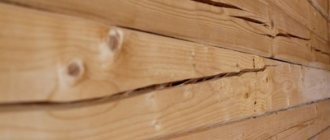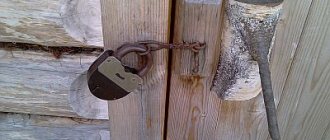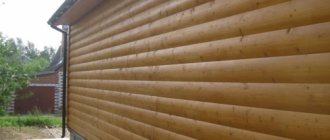Regarding the bathhouse, talk about anything - everything becomes a subject of dispute. Everyone judges and judges in their own, habitual way. There are as many opinions as there are people about whether it is necessary to make a window in the steam room of a bathhouse. But you shouldn’t leave this purely as a matter of taste. After all, it is necessary or not depending on specific conditions, and they can be listed. This is what we will do below.
Arguments against window installation
In a classic Russian bath there is no window in the steam room. After all, creating and maintaining the desired indoor microclimate is quite difficult. To do this, you need to heat the bathhouse well. And then optimally maintain the beneficial heat.
The presence of a window opening automatically implies the existence of drafts. And they have a very bad effect on the quality of steam. Therefore, even the much-needed ventilation of the room after taking bath procedures was traditionally carried out only through the door. And to dry out the excessive humidity, a massive wood-burning stove was enough, which kept the heat for a long time.
In order not to lose precious heat in the steam room, many modern builders do not even equip a ventilation system. And even more so they refuse even the smallest window. And in their decisions they rely on the experience of their ancestors. Moreover, in addition to heat losses when there is a window in the steam room, there are other problems.
For example, the accumulation of condensation on glass due to temperature changes. Water flows onto the windowsill or wall. And ordinary ventilation will not help to remove this excess moisture. Over time, mold settles on wood or concrete surfaces.
Condensation on the window Source 7lestnic.com
There is a possibility that highly heated glass may burst due to drops of cold water falling on it. But in reality this is only a theoretical assumption. Although many developers, based on such fears, either install special heat-resistant glass in the frame or abandon it altogether.
But in a Russian bath the air temperature rarely rises above 70 °C. This is the peculiarity of steam rooms with a large amount of steam. Under such conditions, the window surface heats up no higher than 45 °C.
For glass to crack due to temperature changes, it must be heated to more than 100 °C and maintained in this state for a long time. This is theoretically possible in dry saunas. But in practice, the glass on a window in a steam room can only break if it is very thin. And according to building codes, its recommended thickness should be at least 6 mm.
Panoramic window in the steam room Source na-dache.pro
Many people also don’t like the fact that the window allows them to spy on those washing. But this is a psychological aspect. And it can be solved quite simply with the help of ordinary curtains. By the way, the latter will protect the glass from splashes of cold water. Therefore, the main argument against installing a window opening in a steam room remains the danger of heat loss due to drafts. But we have already learned to cope with this problem.
Opening mechanisms, material, shape, size, coating
Now that we already have an idea of how window blocks are constructed, we can move on to consider other nuances of constructing wooden windows.
Opening mechanisms
In principle, if the window is not blind, that is, it assumes the possibility of opening, we automatically have the opportunity to regulate how much to open the sash - completely or leave only a gap. But such a gap will be vertical , and this in a certain way affects convection (mixing of warm and cold air flows).
Another option would be a horizontal gap, which is created if the window is tilted into the room. Here the cold flow from the street immediately enters the upper, most heated layer of air in the room, cools it and only then falls down. This type of ventilation is more effective than vertical ventilation.
In the photo: a plastic window, but it illustrates horizontal opening
Therefore, modern windows began to be made not just in two versions:
- rotary (first);
- and folding (second),
and be equipped with both mechanisms at once, increasing the ventilation capabilities of the windows. You will find a tilt-and-turn mechanism in models from many manufacturers. We recommend it, although it will also affect the cost of the purchase.
ATTENTION! All types of mechanisms apply to all block designs described above. That is, in a double frame, for example, you can install two tilt-and-turn mechanisms.
Material
When talking about wood, one cannot ignore such an important issue as choosing wood . Different trees have different characteristics of hardness, strength, tendency to rot, tendency to swell from moisture, etc. Since we are talking about a bathhouse, all the characteristics turn out to be even more significant, because here the tree is exposed to the most harmful effects of moisture . Plus the temperature, of course, although it mainly affects drying (which can be correct or incorrect - in the latter case, cracks form).
So, what breeds are most often used in bathhouses? First of all, everyone will call linden . Its wood has a valuable property - it is not inclined to swell (=change dimensions) even with strong moisture. Just right for a bathhouse. Doors and windows made from it will fit into their openings after bath procedures.
But linden also has disadvantages - it is a very soft species, that is, it is easy to mechanically damage. And it is very unstable in relation to mold and rot. Therefore, what is made from it needs special protection - impregnation with antiseptics, for example.
IMPORTANT! Any impregnations and coatings in the steam room should be considered harmful, because at high temperatures, the volatile organic and inorganic compounds that make up them end up in the air that people breathe. When choosing impregnations and coatings, focus on those designed specifically for baths.
Other commonly used species are ash, aspen, and alder.
Coniferous trees can only be used in a bathhouse if the owner prefers a Russian bathhouse with low temperatures . Because when high, conifers emit resin, which smells pleasant, but can burn. Well, it’s sticky and doesn’t wash off well.
Combined material
In addition to purely wooden structures, several combined options have been developed, which involve plastic or metal (aluminum).
Finnish version: wood + plastic + double-glazed windows
If we are talking about double frames , then the inner one can be wooden, and the outer one can be plastic or metal.
But even a single one can be protected with dies made of one material or another. The base will be either plastic or wood. In the first case, the inside of the plastic frame is lined with wooden dies. Wood is a good heat insulator and reduces the thermal load on PVC - it warps less and releases less organic matter.
If the base is wooden, then outside can be partially or completely covered with plastic or metal. This is good protection from environmental influences.
Form
Variations in shape are either square or rectangle. In the latter case, it can be elongated either in length or in width.
All forms are eligible for use in the bathhouse . The choice of a specific one depends on the wishes of the owner and the designer’s ideas. It's up to you to decide.
Size
In a bathhouse, they usually install not one window, but several, but more on that below. Now the important thing is that the sizes can vary from minimal to panoramic .
We would call the minimum In this case, there will still be some glass inside











